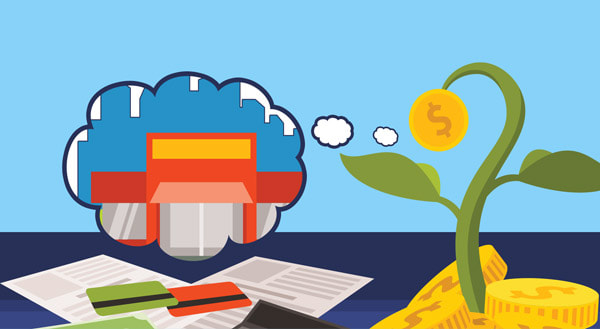Clean Energy's Growing Pains: Attacks And Challenges In A Thriving Industry

Table of Contents
Misinformation and Public Perception Attacks on Clean Energy
Misinformation campaigns actively undermine public trust in clean energy technologies, hindering their widespread adoption. These campaigns often leverage pre-existing anxieties and biases to spread false narratives. Common misconceptions include:
- Debunking myths about renewable energy's intermittency: While solar and wind power are intermittent, advancements in energy storage, smart grids, and diverse energy portfolios are effectively mitigating this challenge. The argument of unreliability is often overstated.
- Addressing concerns about the environmental impact of manufacturing clean energy technologies: The manufacturing process of any technology has an environmental footprint. However, lifecycle assessments consistently demonstrate that renewable energy sources have significantly lower overall carbon emissions compared to fossil fuels, even accounting for manufacturing. Transparency and responsible sourcing are crucial here.
- Countering false narratives about job losses in the fossil fuel industry: While the transition to clean energy may displace some jobs in the fossil fuel sector, it simultaneously creates numerous new opportunities in manufacturing, installation, maintenance, and research within the renewable energy industry. Retraining and investment in new skills are vital to manage this shift.
Combating misinformation requires media literacy, robust fact-checking initiatives, and proactive public communication. Emphasizing the economic benefits, environmental advantages, and technological progress of clean energy is crucial to build public support.
Regulatory Hurdles and Policy Challenges for Clean Energy Development
Inconsistent or restrictive regulations significantly hamper the expansion of clean energy projects. The permitting process for renewable energy installations, such as wind farms and solar plants, is often complex and time-consuming:
- Navigating complex environmental impact assessments: These assessments, while necessary, can be lengthy and costly, potentially delaying project completion. Streamlining processes while maintaining environmental protection is crucial.
- Dealing with local zoning regulations and community opposition: Local regulations and community concerns can create significant obstacles, especially for large-scale projects. Effective community engagement and transparent communication are vital to address these concerns.
- The impact of fluctuating government policies and subsidies on investment: Uncertainty regarding long-term government support can deter investment in clean energy projects. Stable, predictable policies are essential to attract investment and drive innovation.
Supportive government policies, streamlined permitting processes, and proactive engagement with local communities are essential to overcome these regulatory challenges and unlock the full potential of clean energy.
Economic Challenges and Financial Risks in the Clean Energy Sector
The upfront costs of clean energy infrastructure development can be substantial, creating a significant barrier to entry for many projects. Fluctuating energy prices and market volatility also pose significant financial risks:
- The role of venture capital and investment in mitigating financial risks: Venture capital and other investment models are crucial in mitigating risk and supporting the development of innovative clean energy technologies.
- Exploring government incentives and tax credits to reduce costs: Government incentives, such as tax credits and subsidies, can make clean energy projects more financially viable.
- The importance of long-term planning and risk assessment: Careful planning, thorough risk assessment, and diversified investment strategies are essential for managing economic uncertainties.
Despite these challenges, the long-term economic benefits of clean energy are substantial, including job creation, energy independence, and reduced healthcare costs associated with air pollution.
Grid Integration and Infrastructure Limitations for Clean Energy Transition
Integrating intermittent renewable energy sources, such as solar and wind power, into existing electricity grids presents significant technical challenges. The grid infrastructure often needs upgrades and expansion to accommodate the increasing capacity of clean energy sources:
- Investing in smart grids and advanced energy storage solutions: Smart grids and energy storage technologies are essential for managing the intermittency of renewable energy and ensuring grid stability.
- The importance of grid modernization for efficient energy distribution: Modernizing grid infrastructure is crucial for efficient energy distribution and minimizing transmission losses.
- Addressing issues of grid stability and reliability with intermittent renewables: Integrating renewable energy sources requires careful planning and management to maintain grid stability and reliability.
Grid modernization is not merely an option; it's a prerequisite for a successful transition to a clean energy future.
Conclusion: Overcoming Clean Energy's Growing Pains
The transition to a clean energy future is fraught with challenges: misinformation campaigns undermine public confidence, regulatory hurdles impede project development, economic risks deter investment, and grid limitations hinder integration. However, these Clean Energy's Growing Pains are surmountable. Through collaborative efforts, technological innovation, and supportive government policies, we can address these challenges and unlock the enormous potential of renewable energy. Learn more about how to overcome clean energy's growing pains and contribute to a sustainable future. Support sustainable energy initiatives and advocate for policies that promote the growth of clean energy while mitigating its challenges.

Featured Posts
-
 Thlatht Njwm Jdd Fy Tshkylt Mntkhb Amryka Tht Qyadt Bwtshytynw
May 21, 2025
Thlatht Njwm Jdd Fy Tshkylt Mntkhb Amryka Tht Qyadt Bwtshytynw
May 21, 2025 -
 Australian Foot Race Man Sets New Speed Record
May 21, 2025
Australian Foot Race Man Sets New Speed Record
May 21, 2025 -
 Jaw Dropping Antiques Roadshow Discovery Leads To Couples Arrest For Trafficking National Treasure
May 21, 2025
Jaw Dropping Antiques Roadshow Discovery Leads To Couples Arrest For Trafficking National Treasure
May 21, 2025 -
 Big Bear Ai Stock Risks And Rewards For Potential Investors
May 21, 2025
Big Bear Ai Stock Risks And Rewards For Potential Investors
May 21, 2025 -
 Preparing For School Delays A Guide To Winter Weather Advisories
May 21, 2025
Preparing For School Delays A Guide To Winter Weather Advisories
May 21, 2025
Latest Posts
-
 Huuhkajien Tulevaisuus Uusi Valmennus Ja Mm Karsinnat
May 21, 2025
Huuhkajien Tulevaisuus Uusi Valmennus Ja Mm Karsinnat
May 21, 2025 -
 Suomi Mm Karsinnoissa Huuhkajien Valmennus Uudistuu
May 21, 2025
Suomi Mm Karsinnoissa Huuhkajien Valmennus Uudistuu
May 21, 2025 -
 Huuhkajat Mm Karsinnoissa Uuden Valmennuksen Haasteet
May 21, 2025
Huuhkajat Mm Karsinnoissa Uuden Valmennuksen Haasteet
May 21, 2025 -
 Huuhkajien Uusi Valmennus Kohti Mm Karsintoja
May 21, 2025
Huuhkajien Uusi Valmennus Kohti Mm Karsintoja
May 21, 2025 -
 Pukki Ja Kamara Pois Avauskokoonpanosta Friisin Valinnat
May 21, 2025
Pukki Ja Kamara Pois Avauskokoonpanosta Friisin Valinnat
May 21, 2025
